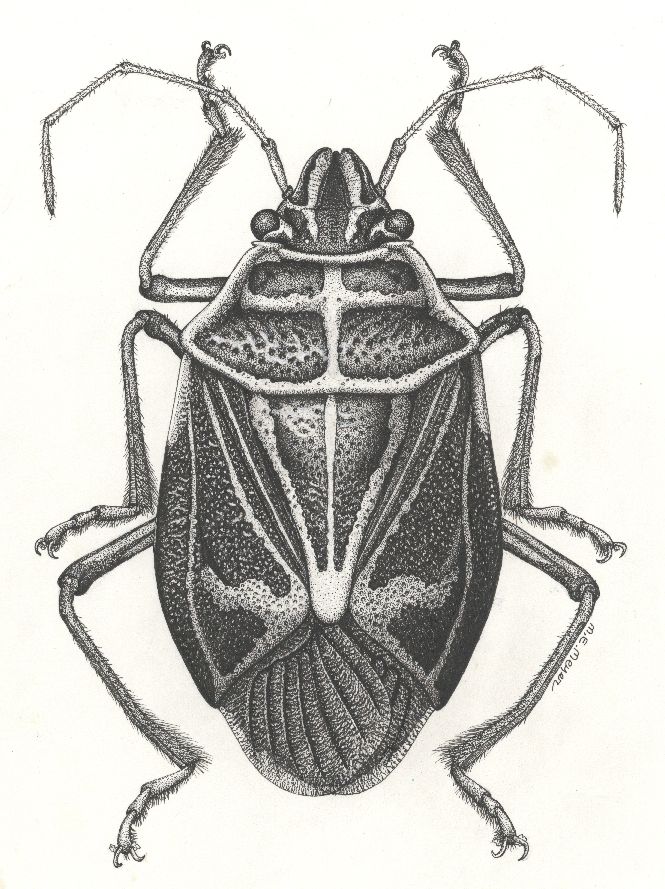 |
|
|
|
Madates Strand, 1910 Cinxia Stål, 1862: 105. (junior homonym of Cinxia Meigen, 1800, Diptera) Datames Horváth, 1909: 631. (new name for Cinxia Stål, 1862; junior homonym of Datames Stål, 1875, Orthoptera) Madates Strand, 1910: 19. (new name for Datames Horváth, 1909) Type Species: Cimex limbata Fabricius, 1803, by original designation. Included Species: limbata (Fabricius, 1803) |
| Comments: The genus Madates is currently monotypic with the only known species reportedly occurring from southern India eastward through southern China, southeast Asia to Indonesia. Examination of numerous specimens, however, has revealed that those specimens from southern India are distinct from specimens from southeast Asia and Indonesia. After borrowing more specimens from several institutions, two more species have been discovered from isolated areas in China. This will bring the total number of species in the genus to four. |
|
Key to males of the genus Madates
|
1 Black spot on base of each juga continuing cephalad along lateral margin of juga distinctly beyond apex of adjacent antennifer; transverse pale band on apical third of each hemelytron broad mesially near apex of scutellum, becoming narrower laterally; transverse sulcus on posteroventral surface of pygophore interrupted medially by low tumescence |
|
|
- Black spot on base of each juga usually not extending cephalad beyond apex of adjacent antennifer, in some specimens, this black spot does extend forward, but only submarginally, the extreme lateral edge of each juga is still pale; transverse pale band on apical third of each hemelytron of nearly uniform width throughout; transverse sulcus on posteroventral surface of pygophore not interrupted medially |
2 |
|
2(1) Inner lobe of each paramere relatively robust short, not surpassing lateral concave lobe, with four longitudinal ridges, apex obtuse; superior ridge of pygophore not or only slightly produced caudad medially, production if present very broad |
new species no. 2 |
|
- Inner lobe of each paramere narrower, more elongate, usually surpassing apex of lateral concave lobe, with three longitudinal ridges, apex usually distinctly spinose; superior ridge of pygophore medially, production narrow, obtusely triangular |
3 |
|
3(2) Inner lobe of each paramere greatly elongate, nearly parallel sided, apex obtusely spinose; anterior half of proctiger only slightly wider than posterior half; transverse sulcus on posteroventral surface of pygophore interrupted laterally by diagonal narrow ridge beginning near medial excavation in inferior ridge and running ventrolaterad |
new species no. 3 |
|
- Inner lobe of each paramere not as elongate, sides not parallel, but rather tapering to sharply spinose apex; anterior half of proctiger distinctly wider than posterior half; transverse sulcus on posteroventral surface of pygophore uninterrupted laterally |
limbata (Fabricius) |
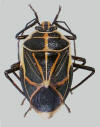 Madates limbata |
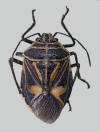 New species no. 1 |
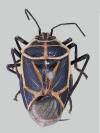 New species no. 2 |
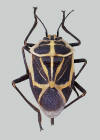 New species no. 3 |
| Researchers | Genus Index | Systematics | Host Information |
| Bibliography | Species Index | Biographies & Type Info | Natural Enemies |
| Catalogs | Identifications | Collection Lists | Other resources |
David A. Rider
Associate Professor of Entomology
North Dakota State University
202 Hultz Hall
Fargo, ND 58105
E-Mail: David.Rider@ndsu.nodak.edu
Published by the Department of
Entomology
Prospective students may schedule a visit by calling 1-800-488-NDSU.
